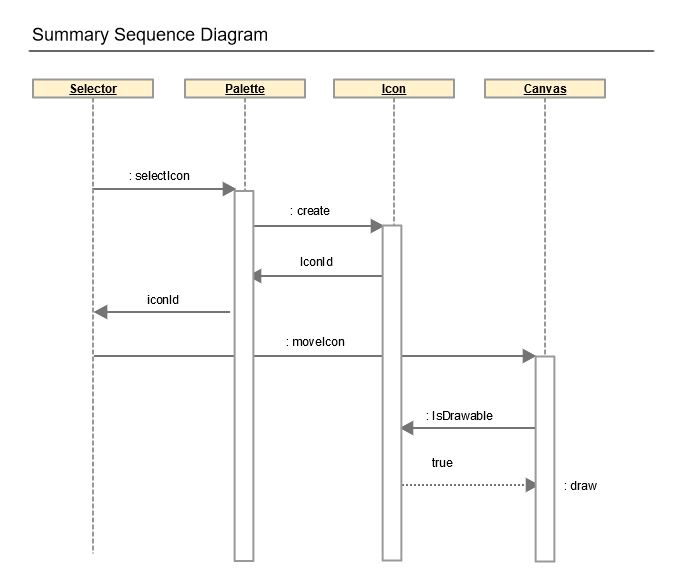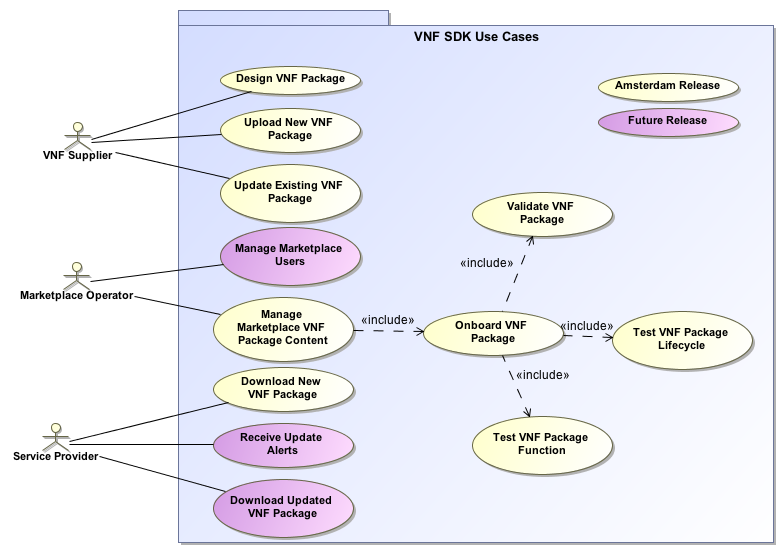Use Case Overview & Description
Network Slicing provides dedicate specialized call plane resources called Network Slicing within the network.
Release 11 of E2E Network Slicing introduces the evolution of incremental improvements of Network Slicing.
Use Case Key Information
| TOPIC | DESCRIPTION | WIKI PAGE |
| Requirements Proposal | This is a link to the requirements proposal made on the Requirements Sub-committee | |
| Architecture S/C info | Information on the Architecture sub-committee presentation | |
| Prior Project "Base" Wiki | Link to the Jakarta release page for this use case | |
| Requirements Jira (REQ-###) Ticket | Link to the REQ Jira ticket for this use case | REQ-1215 - Getting issue details... STATUS |
| Key Use Case Leads & Contacts | USE CASE LEAD: Kevin Tang , Ahila P USE KEY CONTACTS: Kevin Tang , Ahila P , Henry Yu , Dong Wang , Borislav Glozman Alessandro Gerardo D'Alessandro | |
| Meetings Register & Recordings | Link to Use Case Team meetings. | J-release: E2E Network Slicing use case weekly meetings (Dec - May 2022) I-release: E2E Network Slicing use case weekly meetings (May - Oct 2021) |
BUSINESS DRIVER
This section describes Business Drivers needs. These business drivers are presented on the Requirements Sub-committee and should also be put into the release requirements sub-committee page.
Executive Summary - (Give a short description of your Use Case, the "Executive 2 min elevator pitch", this describes the "WHAT")
Business Impact - (This is the Business Impact which describes why this use case is important from a business perspective, this describes the "WHY").
Business Markets - (This is the marketing analysis, which can include but not limited to applicable markets, domains, marketing projections, this can describe the "WHERE").
Funding/Financial Impacts - (The Funding requirements and Financial impacts can describe the financial savings, or CAPEX, OPEX impacts for a Use Case).
Organization Mgmt, Sales Strategies - (It is suggested that you use the following wording): There is no additional organizational management or sales strategies for this use case outside of a service providers "normal" ONAP deployment and its attendant organizational resources from a service provider. (This would typically describe the "WHO", but because use cases are all deployed with ONAP itself, these two areas come with the actual ONAP deployment and uses the organizational management and sales strategies of a particular service provider's ONAP deployment)
Development Status
| PROJECT | PTL | User Story / Epic | Requirement |
| A&AI | TBD | SO invokes AAI to read the nexthopinfo | |
| AAF | No impact | ||
| APPC | No impact | ||
| CC-SDK | No impact | ||
| CPS | Toine Siebelink | TBD | update xNF data to CPS |
| DCAE | TBD | Slicing KPI monitoring, ML prediction MS, IBN driven closed loop | |
| DMaaP | Mandar Sawant (Old) → Fiachra Corcoran (New) | No impact | |
| External API | No impact | ||
| HOLMES | No impact | ||
| MODELING | No impact | ||
Multi-VIM / Cloud | No impact | ||
| OOF | No impact | ||
| OOM | No impact | ||
| POLICY/CLAMP | Liam Fallon | No impact | |
| PORTAL | No impact | ||
| SDN-C | TBD | update xNF data to CPS, A1 interface for RAN policy/configuration | |
| SDC | No impact | ||
| SO | TBD | Dynamic endpoints discovery | |
| VID | No impact | ||
| VF-C | No impact | ||
| VNFRQTS | No impact | ||
| VNF-SDK | Weitao Gao (Old) → user-67d6f (New) | No impact | |
| CDS | No impact | ||
| UUI | TBD | Dynamic endpoints discovery at NSMF, Slicing KPI monitoring | |
| Policy | TBD | A1 Policy | |
| RAN Simulator | TBD | A1 interface for RAN policy/configuration |
List of PTLs: Approved Projects
*Each Requirement should be tracked by its own User Story in JIRA
USE CASE DIAGRAM
Use cases define how different users interact with a system under design. Each use case represents an action that may be performed by a user (defined in UML as an Actor with a user persona).
Use Case Functional Definitions
Use Case Title | Title of the Use Case |
Actors (and System Components) | The list of Actors and System Components that participate in the Use Case |
Description | Short overview of the Use Case |
Points of Contact | Authors and maintainers of the Use Case. Use Case Lead, Key Use Case members and code contributors. |
Preconditions | A list of conditions that are assumed to be true before the Use Case is invoked Includes description of Information Consumed |
Triggers / Begins when | Describes the trigger for beginning the Use Case |
Steps / Flows (success) | Describes the sequence of steps and interactions that occur during the Use Case (may include: description, data exchanges, functionality, state changes) Interaction diagrams may be included or referenced |
Post-conditions | The expected results of the execution of the Use Case Includes description of Information Produced |
Alternate / Exception Paths | Description of any exceptions or special process that could occur during Use Case |
Related Use Cases | List of the Use Cases referenced by this Use Case |
Assumptions | Describes any assumptions that are made for this use case |
Tools / References / Artifacts | List of any tools or reference material associated with this Use Case as well as any JIRA trace-ability. List of any associated diagrams or modelling artifacts associated with the Use Case |
TESTING
Current Status
Testing Blockers
- High visibility bugs
- Other issues for testing that should be seen at a summary level
- Where possible, always include JIRA links
End to End flow to be Tested
**This should be a summary level Sequence diagram done in Gliffy**

Test Cases and Status
| 1 | There should be a test case for each item in the sequence diagram | NOT YET TESTED |
| 2 | create additional requirements as needed for each discreet step | COMPLETE |
| 3 | Test cases should cover entire Use Case | PARTIALLY COMPLETE |
NETWORK SLICING SLIDES FOR R11
